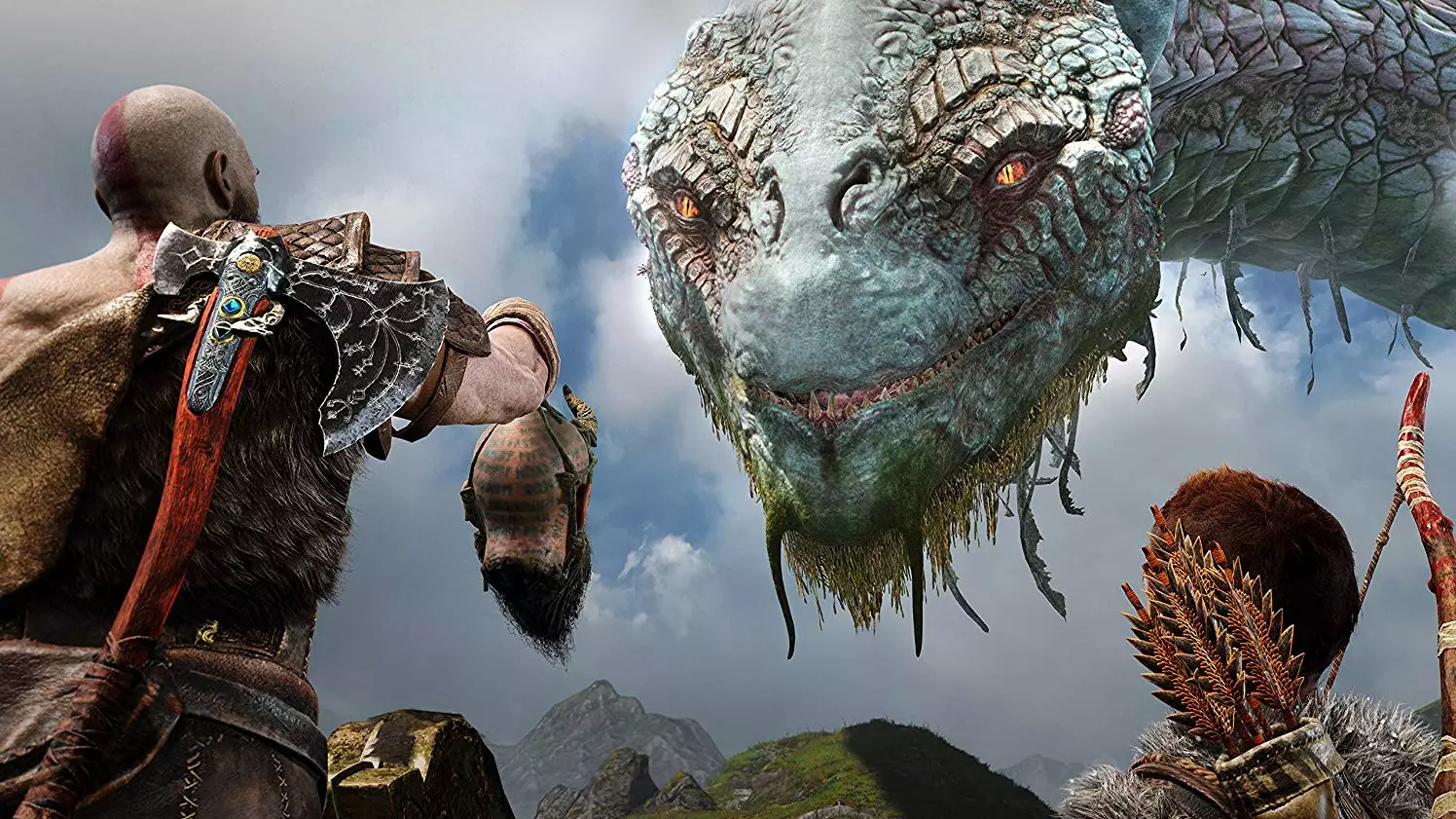
Before we begin, Spoiler Warning... We'll be discussing the story of God of War (2018) and the Norse myths that inspire it. Assuming you're okay with that, on we go.
Even if you know the Norse myths well, you'll be surprised by parts of 2018's God of War. While it may include stories you recognise, and a cast of characters that are familiar, Sony Santa Monica changed a great deal in making its game.
Loki does not live in Asgard among the Aesir; instead, he grows up in Midgard, entirely unaware that he's not a mere mortal. Freya, too, doesn't find herself beloved by the Aesir. She's been trapped in Midgard, denied access to the other realms. In Santa Monica's telling she was also married to Odin and it is her, not Frigg, who is mother to Baldur.
Advert
One response to these changes could be frustration, because the game doesn't fit the stories you know - although, admittedly, these are stories that are open to interpretation, not to mention many a variance. But, I'd argue these points of change are both in keeping with the tradition of mythology, and tell us a lot about what is important to the game's writers.

In the myths, as in the game, the gods of Asgard, the Aesir, were once at war with the Vanir, the gods of Vanaheim. While the Aesir gods were strong and cunning warriors, the Vanir knew magic and the two people were evenly matched. Now, in the myths, the proposed solution to this war was that Njord, Freya's father, joined the Aesir as a hostage, and the Asgardians gave the Vanir a god called Hoenir in exchange. In God of War, it's not an exchange of hostages but a marriage that ends the war:
Mimir: It took some convincing but ultimately Odin was persuaded to marry his deadliest enemy - a certain Vanir goddess, legendary not only for her fertile beauty but her genius at the very Vanir magic that Odin had long aspired to master.
Advert
You can see how this change from the myth to the game creates a new tension between the families of gods. Freya (pictured above, with Kratos) has left her people to marry the leader of her enemies, while in the myths the treaty was more balanced, and Njord joined the Aesir as part of an exchange.
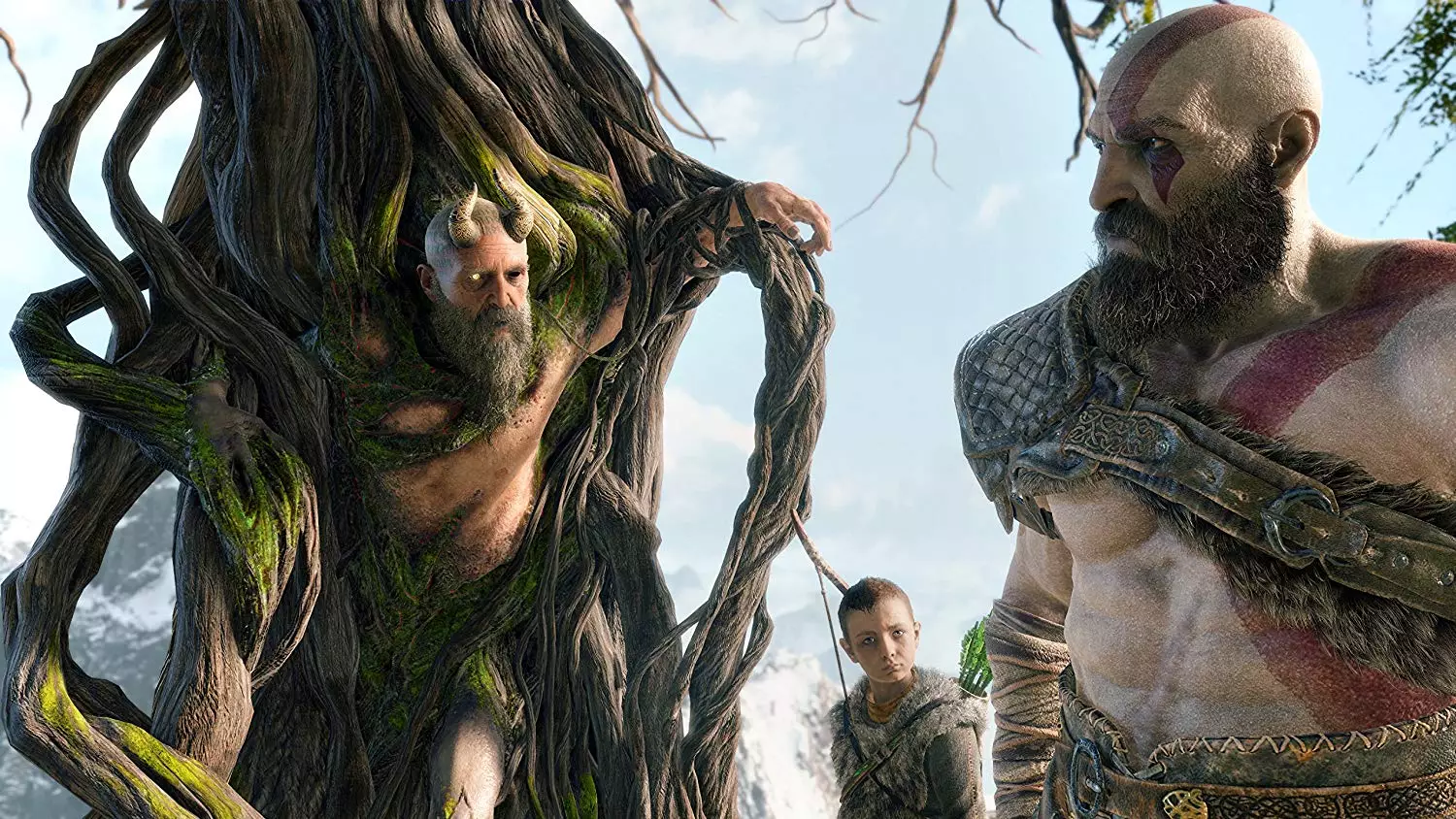
The next departure from the myths is more complex. In the myths, Frigg is married to Odin, rather than Freya (although these figures aren't always seen as two separate entities), and so Odin's son Baldur has nothing to do with Freya. In God of War, Freya is Baldur's mother, though interestingly Atreus still talks of Frigg early in the game - saying that he's heard she is Baldur's mother. This is explained later when Mimir (pictured above while still attached to a tree, alongside Atreus and Kratos) joins him and Kratos:
Atreus: I'm confused. I always heard that Baldur's mother was Frigg.
Advert
Mimir: Aye, Frigg... well, that's more of a pet name, you see. It means, "beloved". Something Odin called Freya after they wed. Out of affection, at first, or so I like to believe. As things turned sour, it became a way to manipulate the truth.
Atreus: How so?
Mimir: Odin didn't want Freya, a Vanir goddess, getting credit for anything in Asgard. So anything worthy she accomplished was attributed to Frigg.
Atreus: Like being Baldur's mother.
Advert
Mimir: That's RIGHT - Freya was Baldur's mother all along!"
This change informs Santa Monica's characterisation of Odin as a cruel, petty god. It also develops Freya's place amongst the gods: she will always be the enemy of the Aesir. She's been trapped in Midgard and even her connection to her son, who is loved among the Aesir, has been erased. The fact that Atreus doesn't know that Baldur is her son at first speaks to the tragedy of her circumstances.
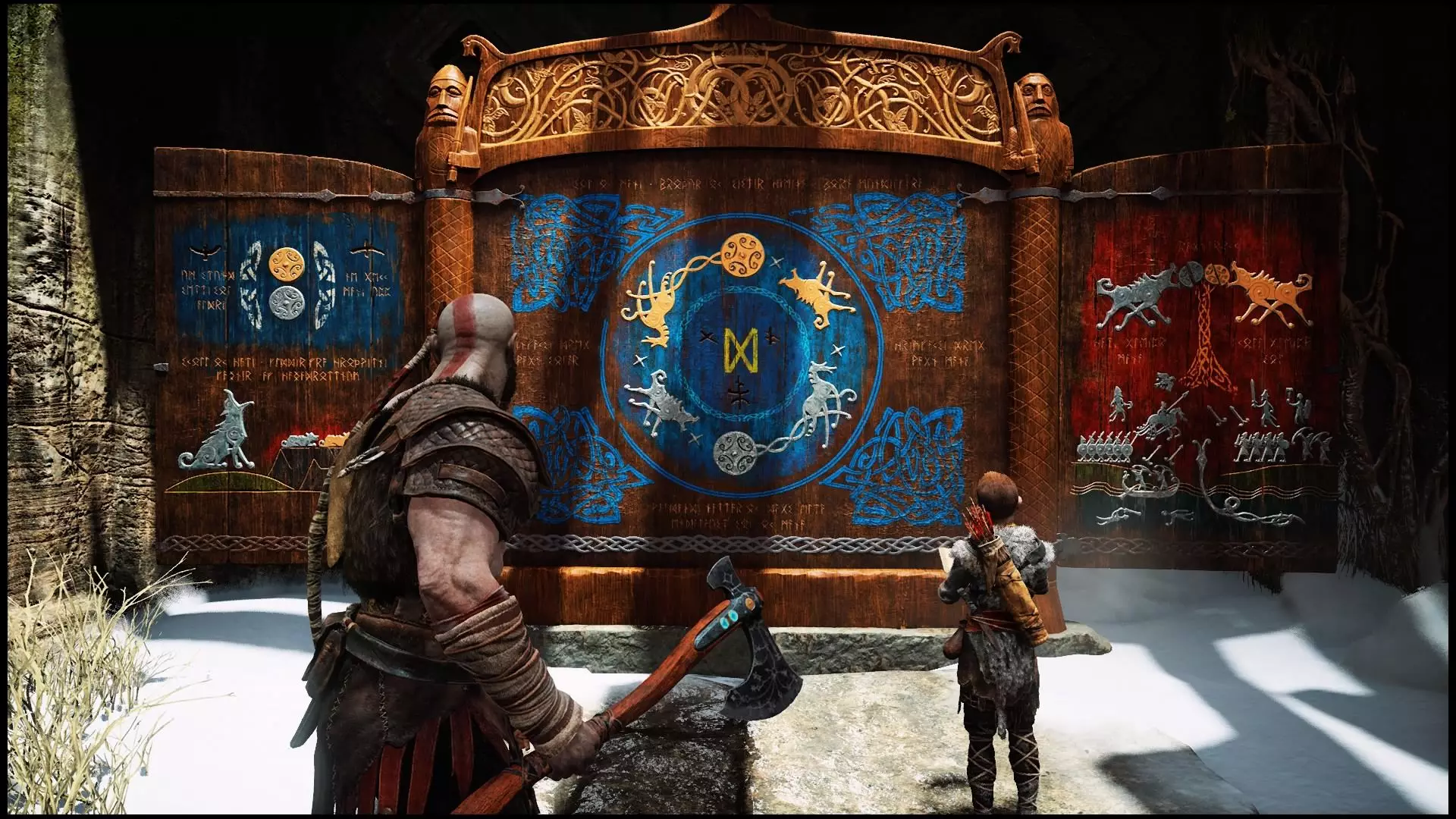
In the myths, the Vanir wars are presented without much colour or emotion. They're simply there to show that two families that once warred can later live together. That may be because the function of the myths was to show that peace is attainable and grievances between warring factions should be buried after peace is brokered. But in Santa Monica's version of the stories, there are victims of war and the damage lasts beyond the peace.
Advert
The stories of Norse mythology are thousands of years old, originally told in languages that have long disappeared. Over the centuries, as the stories have been collected in new translations, their context has been altered, their characters' actions and motivations updated, and with that we learn something of the people telling each new version of the tale.
When Snorri Sturluson assembled these stories in the Prose Edda (although how much of what he actually wrote is disputed) in the 13th century, he added a prologue to the collection that claims Thor is descended from Priam, the last king of Troy, and that Odin is one of Thor's descendants. This prologue is largely ignored in the rest of the stories held in the Prose Edda, but we can understand that Sturluson, writing in the era he did, was trying to tie Norse mythology into wider European myth and history. In that way, the Prose Edda can be seen as a political text, one that makes the Scandinavian countries more legitimate in the eyes of the rest of Europe.
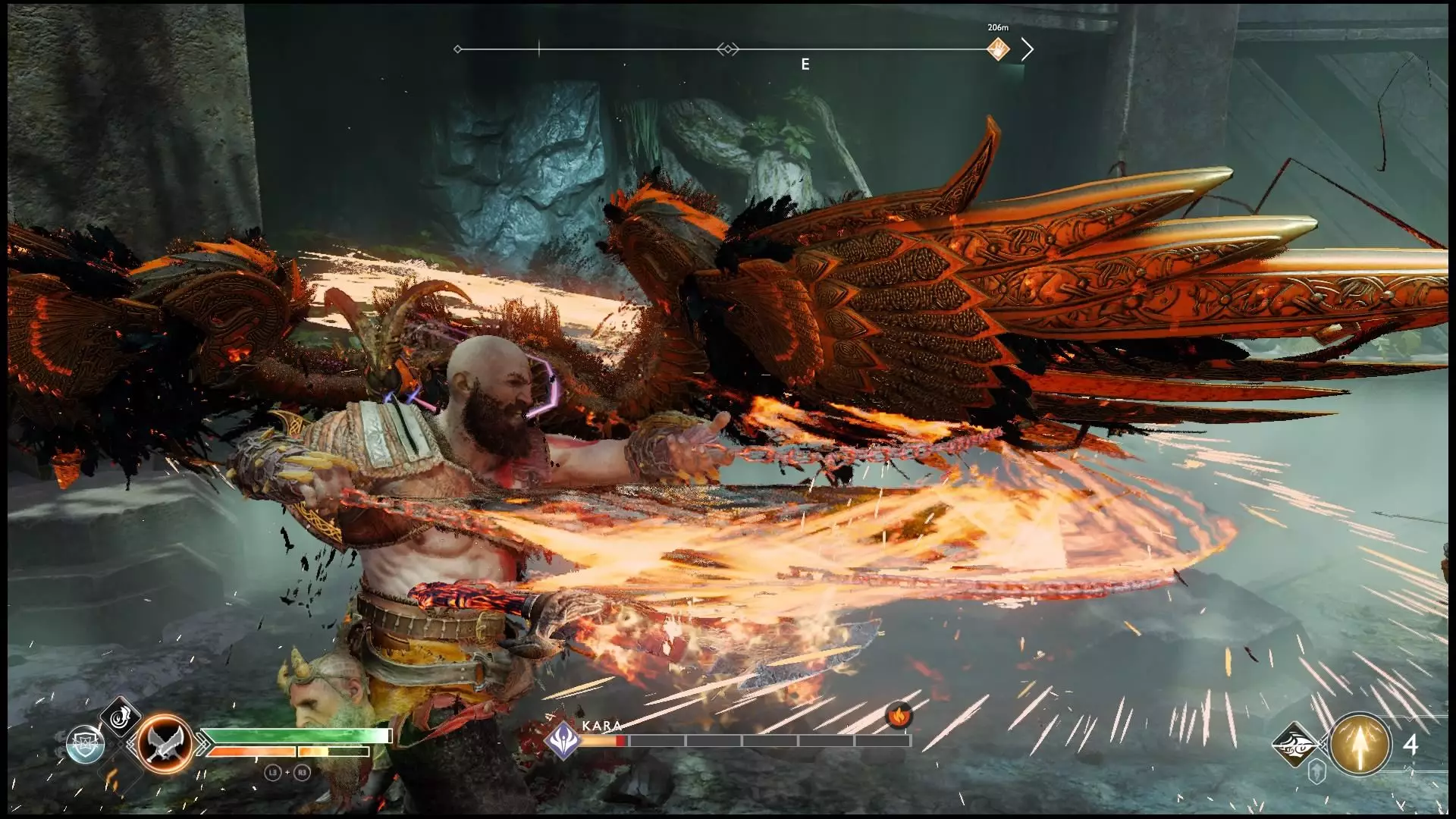
No culture's mythology is unchangeable. The ancient world wasn't static and isolated. People traveled from country to country - trading, warring, exploring - and as they moved around they carried stories with them, and picked up more from the people they met. Stories weren't simply shared, they mixed.
For example, Norwegian professor Magnus Olsen suggests that Valhalla, the Hall of the Slain, is inspired by the gladiators of the Roman Colosseum. Valhalla is said to be where the people who die in battle are taken by the Valkyries. There, the warriors spend every day fighting each other and every night drinking and eating together, much as the gladiators seemed to do every day in Rome.
Similarly, those Valkyries - which in popular stories are beautiful shield maidens who fly above the battlefield selecting which soldiers will live, which will die, and which will spend their afterlife in Asgard - didn't always have that role. Originally they were demons of the dead - and Kratos has to battle them in-game (see above). But, at some point in history, storytellers, perhaps inspired by the tales of shield maidens in other cultures, adapted the Valkyries into allies of Odin. In time they were humanised enough to become love interests of mortals. In the (comparatively) modern retelling of Norse sagas, Richard Wagner's Ring Cycle (or Der Ring des Nibelungen), a Valkyrie falls in love with a man and betrays Odin for him.
We can't look at Norse mythology as though it is one coherent universe. In some stories, Loki is one of the Aesir; at other times, he is a child of giants. Dwarves are sometimes referred to as dark elves, and other times they are their own race entirely. In one story Odin visits a seer to find out who will kill Baldur, in another he visits the seer after Baldur's death to find out who was responsible. The mythology isn't one document but a multitude of poems and sagas, some isolated texts and others assembled into collections. They were written over hundreds of years by many different writers living in different parts of the world.
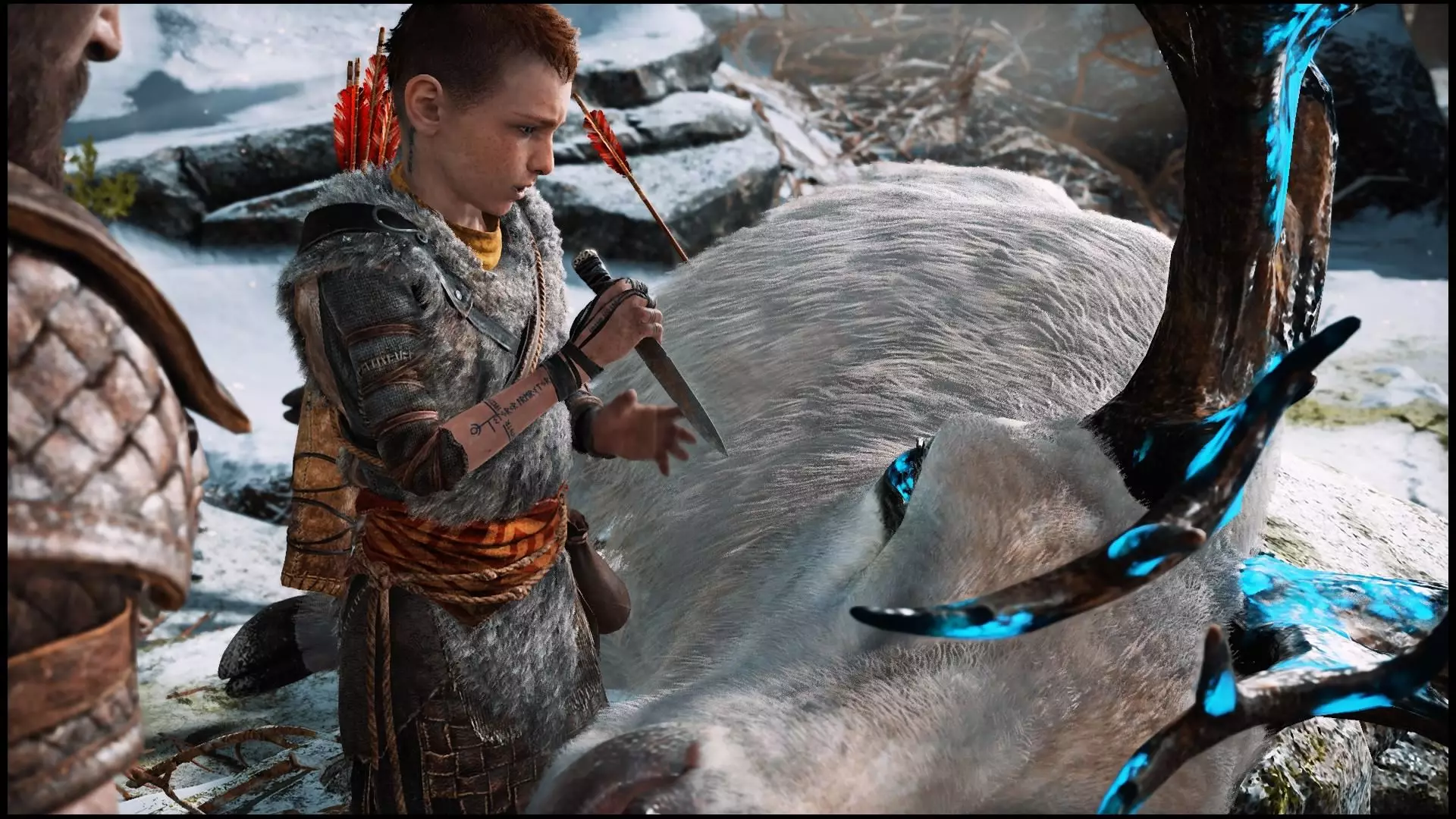
Each time someone told a story about the Norse gods and their realms, they intentionally or unintentionally imbued that story with something of themselves and the time they were writing in. Whether that's Sturluson trying to tie Norse gods into greater European culture, or the monk who composed Beowulf as a way of aligning Norse ideas of honour with the Christian faith, or the Loki of the Marvel films being turned from a villain into a hero as a lesson in redemption, it's a tradition of myths that they change to reflect modern times.
For these reasons, Sony Santa Monica's many changes to the Norse myths it draws from is actually only continuing the tradition of storytelling. We shouldn't be saying that they "got things wrong", but ask why they made the choices they did.
In the case of Freya, I'd argue it makes her a more complex character, and emphasises the conflict between the Aesir and Vanir, which suggests this will become a focus in future games. As for stating that Loki is the son of giants and not one of the Aesir, it puts him on the side of a people who have been wiped out by the gods of Asgard and makes his motivation for inciting Ragnarök all the more understandable.
We'll need to wait for the future games to know exactly what Santa Monica's intention is for this world, or rather this combination of fantastical realms and their equally magical inhabitants. But whatever they decide, they're certainly continuing the same traditions in storytelling that have existed for thousands of years.
This article is part of a God of War series that ran on GAMINGbible's Snapchat Discover edition. Be sure to subscribe to our three-times-weekly edition on Snapchat. You can also read about how Norse myths help us predict the future of the God of War games, and how Kratos got his Leviathan Axe, online now.
Featured Image Credit: Sony Interactive EntertainmentTopics: PlayStation, God Of War